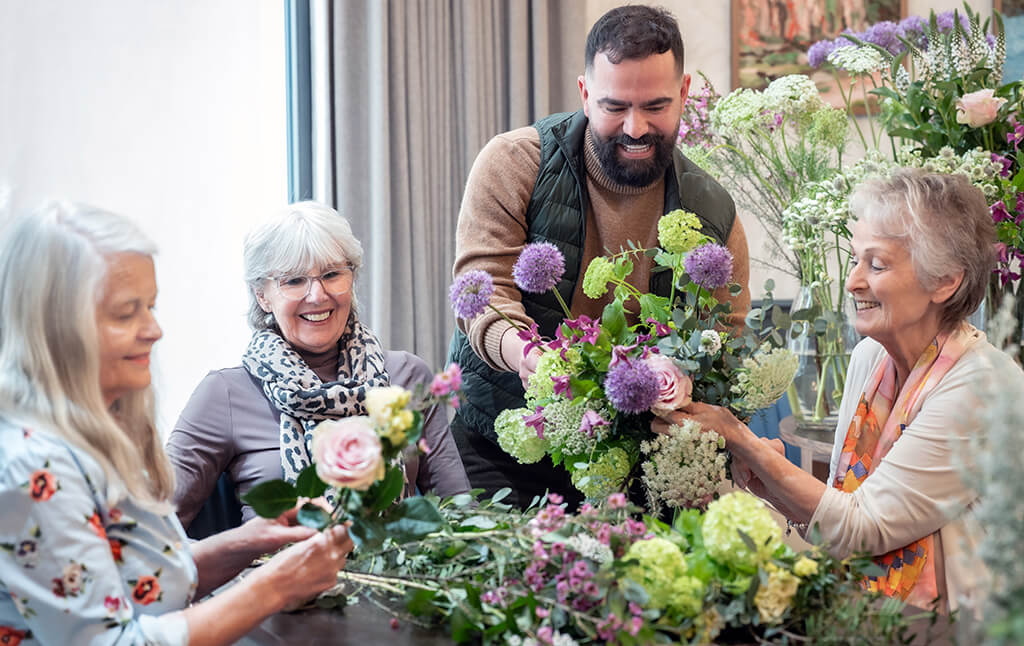Discover how to recognise the right time to move your loved one to a care home with practical tips and key signs to help your family make confident, informed decisions.
Deciding when to move a loved one into a care home is one of the most difficult choices you will face. The decision is rarely straightforward, entangled with emotion, uncertainty and a natural desire to preserve independence for as long as possible. Yet, recognising the right moment can transform the experience from a source of anxiety into one of comfort and improved quality of life.
You may be asking yourself: Is it too soon? Or has the time already passed? How will I know? This guide aims to help you navigate these questions with clarity and confidence, outlining key signs and factors to consider when contemplating the transition to a care home.
Early Indicators That Suggest It May Be Time to Consider a Care Home
No two situations are identical, but certain changes in your loved one’s circumstances can act as clear signals that a care home should be part of the conversation. These signs often emerge gradually and can be subtle, yet they carry significant weight. Some common indicators to watch for include:
- Increasing difficulty with daily tasks: Struggling to prepare meals, manage personal hygiene, or maintain the home environment.
- Frequent falls or near-falls: Evidence of mobility challenges or balance issues that pose a risk to the individual.
- Memory lapses that impact safety: Forgetting to turn off appliances, mismanaging medications, walking with purpose or exit seeking.
- Social isolation or withdrawal: A decline in social engagement, leading to loneliness and mood changes.
- Health deterioration: Repeated hospital admissions, worsening chronic conditions or reduced stamina.
- Carer strain: When family members become overwhelmed, exhausted or unable to provide consistent support.
Noticing these signs doesn’t mean you must rush into a decision, but it does indicate the need to explore options more thoroughly and prepare for the next steps. Early action reduces the risk of a care crisis.
Understanding the Practical Realities of Home Care
Many families initially consider in-home care as an alternative to residential living and for good reason. Staying at home can be comforting and it’s often the preferred choice. However, it’s important to recognise the practical demands and limitations involved.
Consider these challenges:
- Limited availability of round-the-clock support: Home carers often work scheduled shifts, which can leave gaps in overnight care or during emergencies.
- Coordination of multiple services: Medical, therapeutic and domestic care may come from separate providers, requiring management and oversight.
- Safety adaptations needed: Modifications such as stairlifts, grab rails or wet rooms may be necessary, adding cost and complexity.
- Potential for isolation: Without a broader living environment, your loved one may experience fewer social interactions and limited stimulation.
- Emotional and logistical burden on family: Managing care arrangements, appointments and crises can become overwhelming.
Acknowledging these factors early will help you assess whether home care can realistically meet your loved one’s evolving needs.
The Advantages of Choosing a Residential Home
When you consider a luxury residential home like Loveday, you are choosing more than just assistance with everyday tasks. You are selecting an environment designed to enhance wellbeing, offer peace of mind and provide consistent, professional care tailored to individual needs.
Some benefits include:
- Comprehensive 24/7 support: Skilled nurses and carers are always on hand to respond swiftly and efficiently.
- Structured health monitoring: Regular assessments help detect changes early, reducing risk and preventing hospital admissions.
- Social engagement opportunities: Group activities, outings and cultural events promote mental stimulation and connection.
- Tailored wellbeing programmes: Personalised approaches support physical, cognitive and emotional health.
- Beautiful, accessible surroundings: Designed with comfort in mind, providing a true sense of home.
Luxury care homes balance independence with security, allowing your loved one to maintain as much autonomy as possible while ensuring their needs are met.
Practical Questions
Before making the transition, it is helpful to reflect on the following considerations to ensure you’re ready and that the move will be as smooth as possible.
- Is the current living situation safe? Are there unresolved risks related to mobility, memory or health conditions?
- Can home care realistically meet all necessary needs? Would support need to increase substantially or be available 24/7?
- How sustainable is current care provision? Are family carers feeling strained or at risk of burnout?
- Would your loved one benefit from more social interaction and structured activity? Are they showing signs of isolation or depression?
- Is there an opportunity to improve quality of life with more comprehensive care? Could access to professional health support reduce hospital visits or complications?
- Has your loved one expressed their preference about their care and living arrangements?
Including them in the conversation is vital whenever possible and answering these questions honestly will help clarify whether the time has come to explore residential care options.
Preparing for the Transition
Once you have concluded that a care home is the right step, preparation can make all the difference in easing the process.
Consider these steps:
- Visit potential homes together: Encourage your loved one to visit multiple residences to find the right fit for their personality and needs.
- Gather medical records and documentation: Ensure that health information is up to date and accessible for care teams.
- Discuss the move openly and with sensitivity: Acknowledge emotions and provide reassurance about what life will be like.
- Plan the logistics carefully: Arrange for a smooth transition, including moving personal belongings and introducing familiar routines.
- Maintain family involvement: Commit to regular visits, calls and participation in activities to keep connections strong.
Moving to a care home is a significant life event, but thoughtful preparation can help transform it into a positive new chapter.
Recognising That Timing Is Personal
It is important to remember that there is no universal ‘right time’ to move into a residential home. Each individual and family situation is unique and decisions should reflect specific circumstances and values.
Delaying too long may result in crisis admissions or health risks. Moving too early may cause distress or feelings of loss. Striking a balance requires attention, openness to professional advice and ongoing dialogue within the family.
Deciding when to move your loved one into a care home is not simply a question of logistics or medical need. It is about recognising when a change will provide a better quality of life, including richer social contact and personalised support.
At Loveday, we understand how challenging this decision can be. Our approach is to provide an environment where your loved one’s wellbeing is nurtured alongside independence and enjoyment. With expert teams, elegant surroundings and an active, inclusive environment, we offer much more than care: we offer a home where life continues to flourish.



